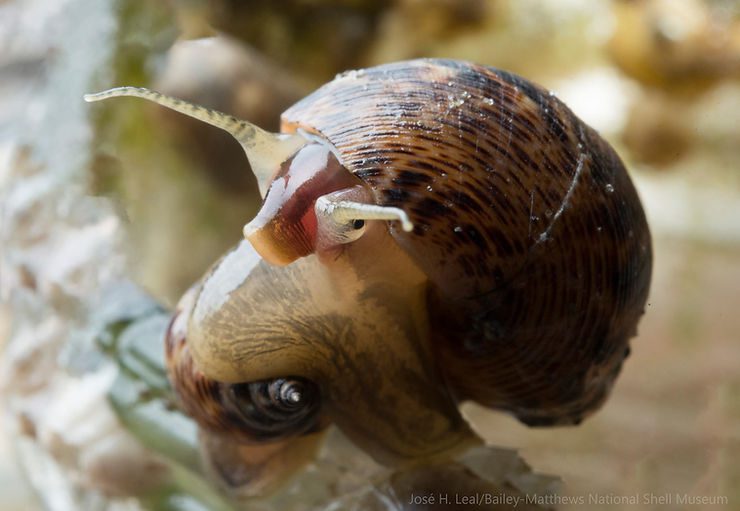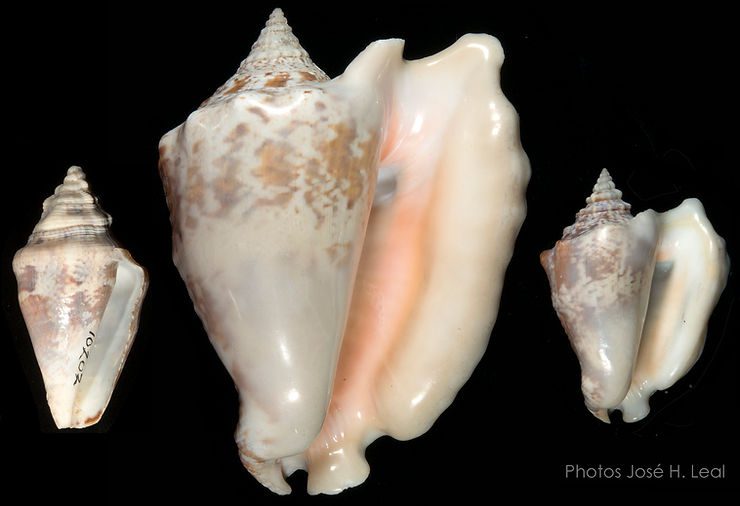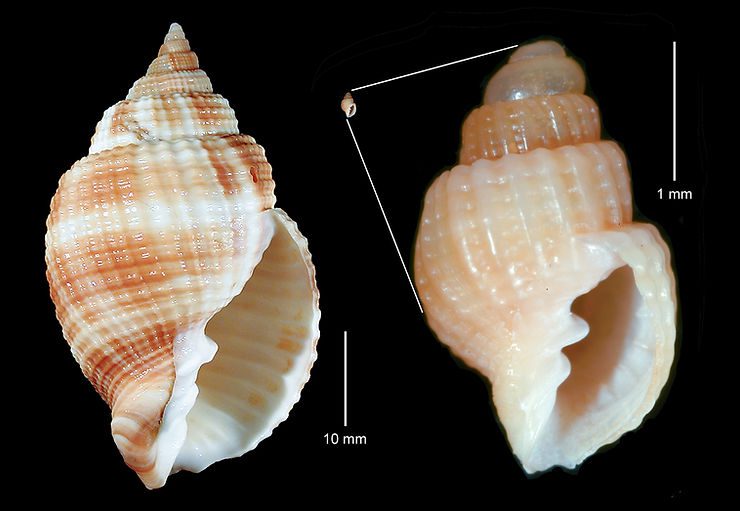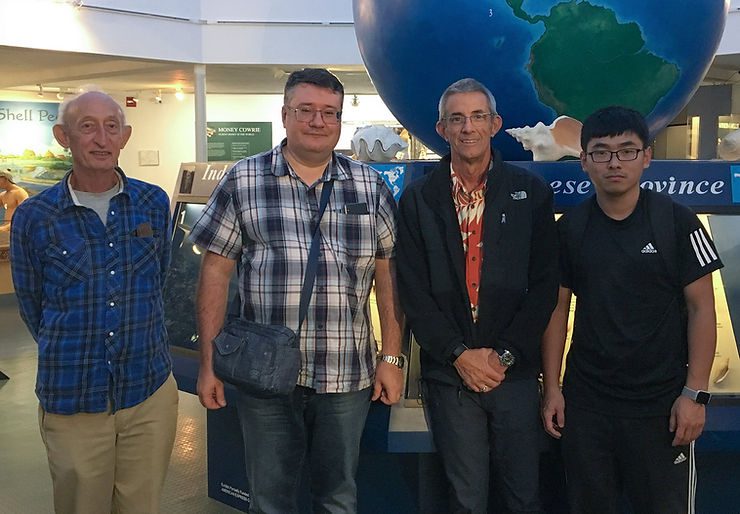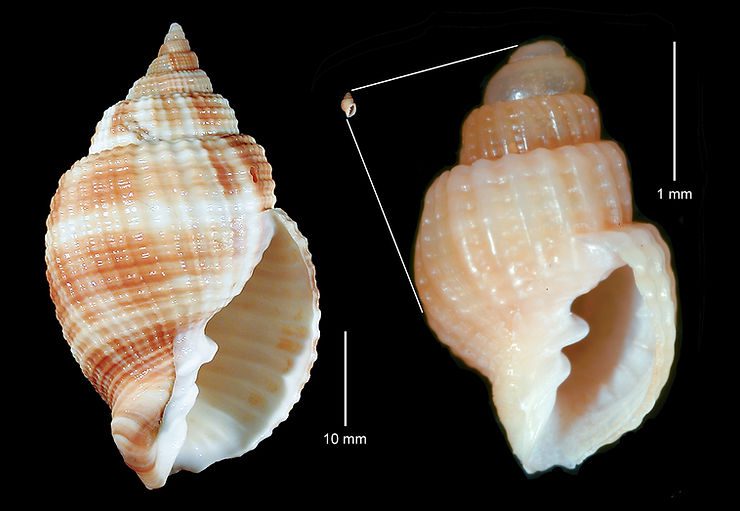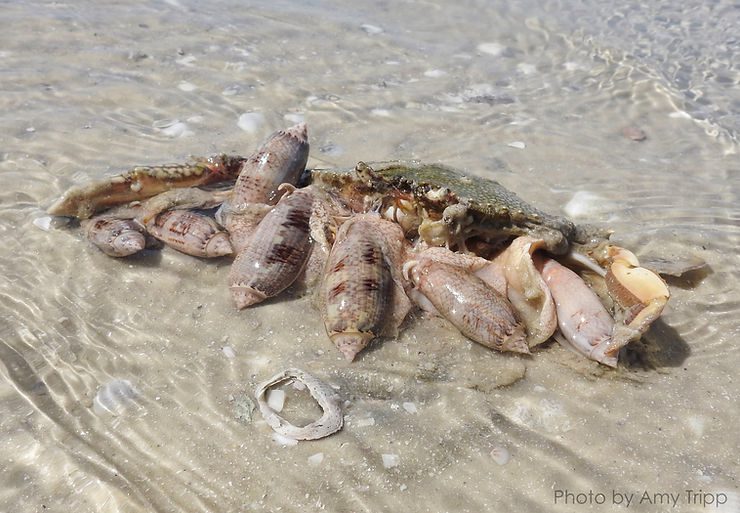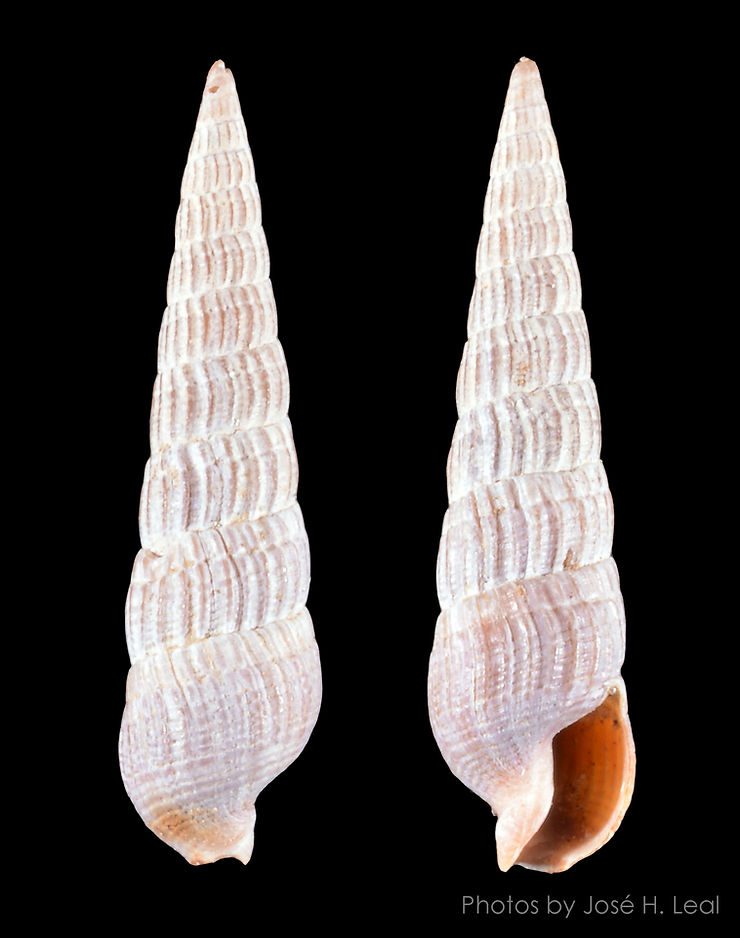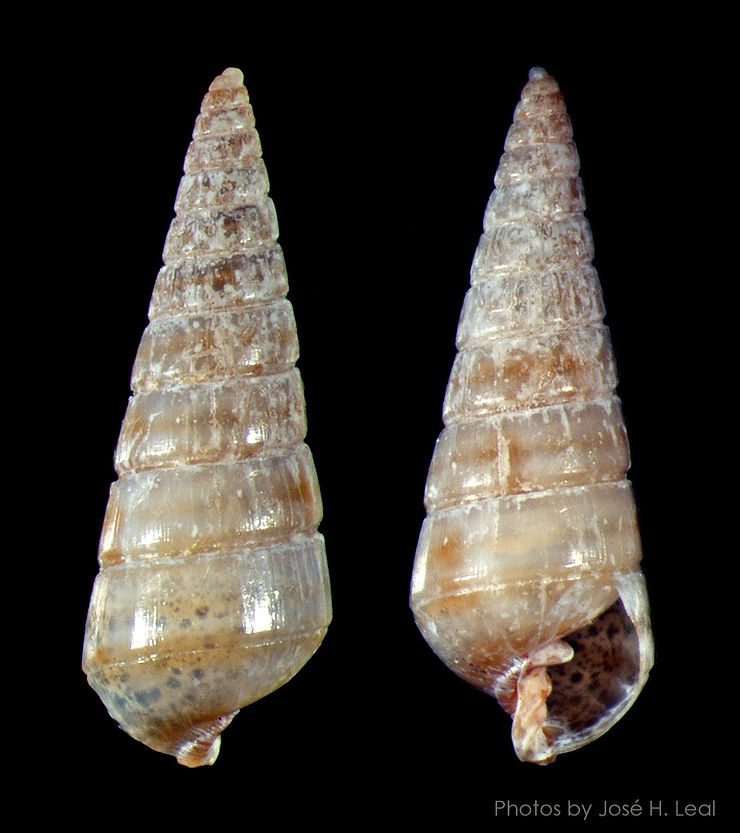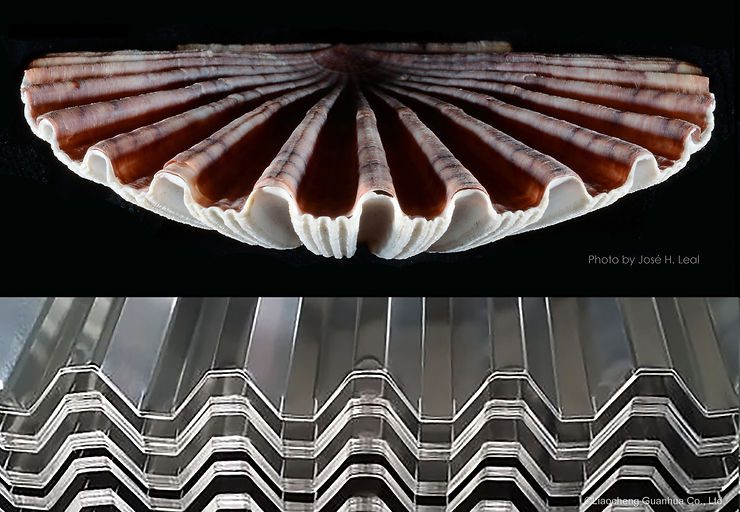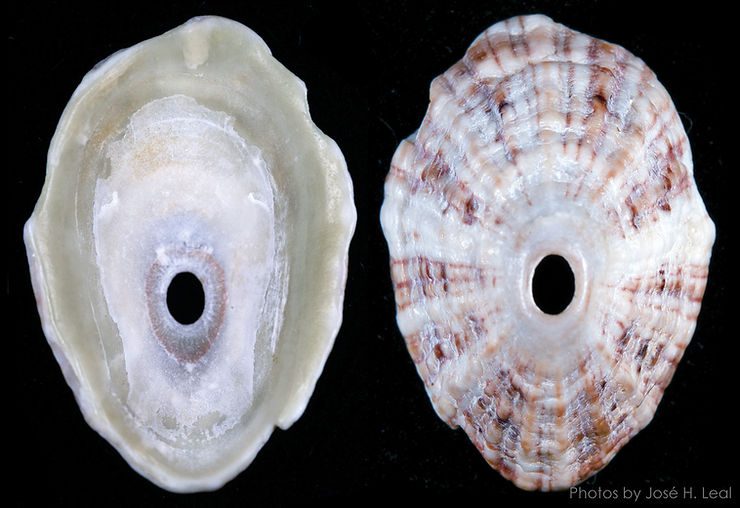
The Rosy Keyhole Limpet
The Rosy Keyhole Limpet, Fissurella rosea (Gmelin, 1791), is one of the most common species of keyhole limpets in the western Atlantic and Caribbean region. This species, however, is only very rarely found on our barrier islands. The shell is oval, and the orifice (“keyhole”) is also oval and reinforced internally by a callus, which is in turn delimited by a reddish-pink line. Shell colors and patterns vary, but mostly consist of reddish-brown radial bands of distinctive widths set on a lighter-
